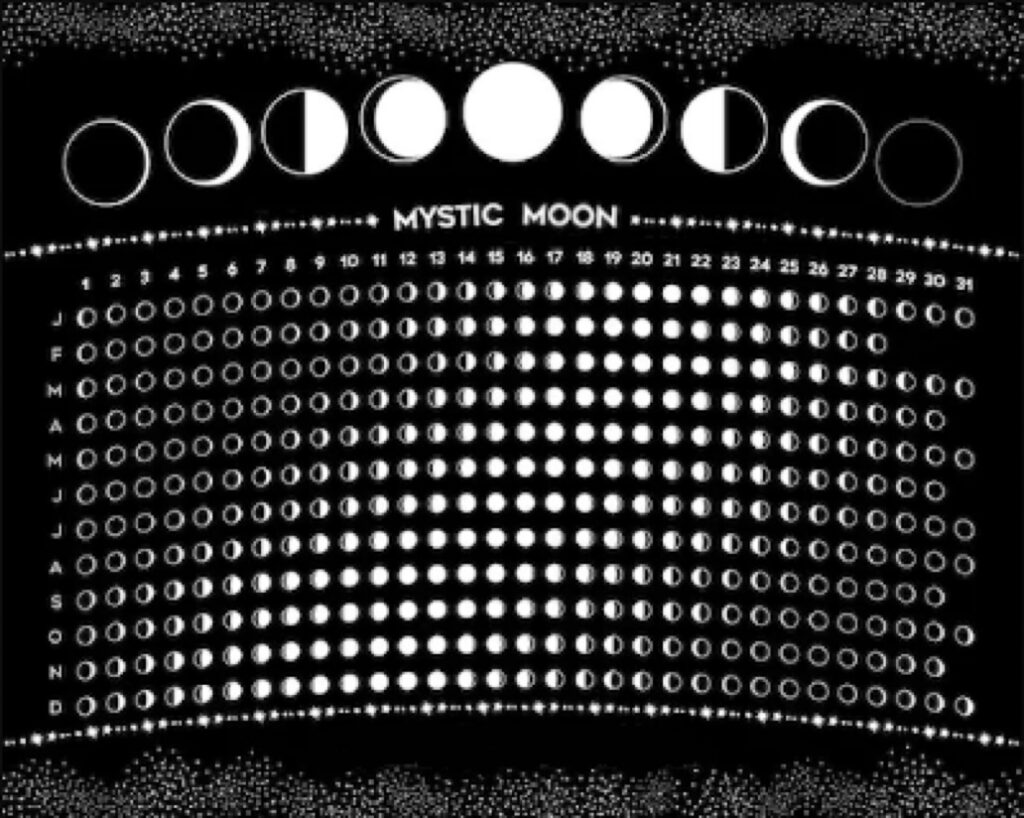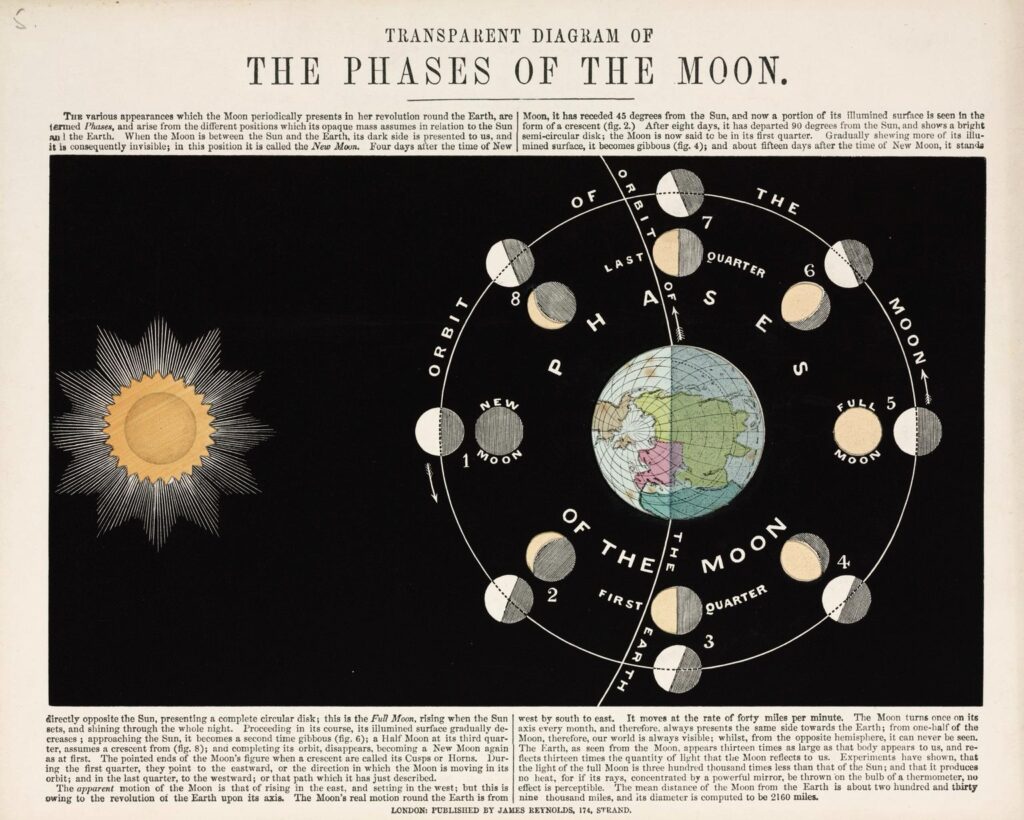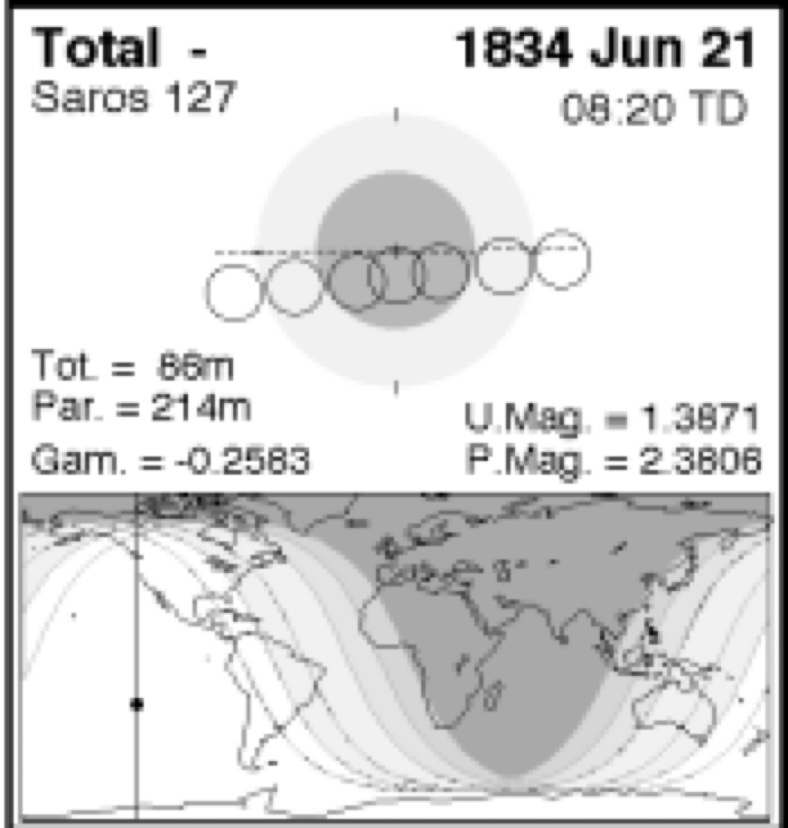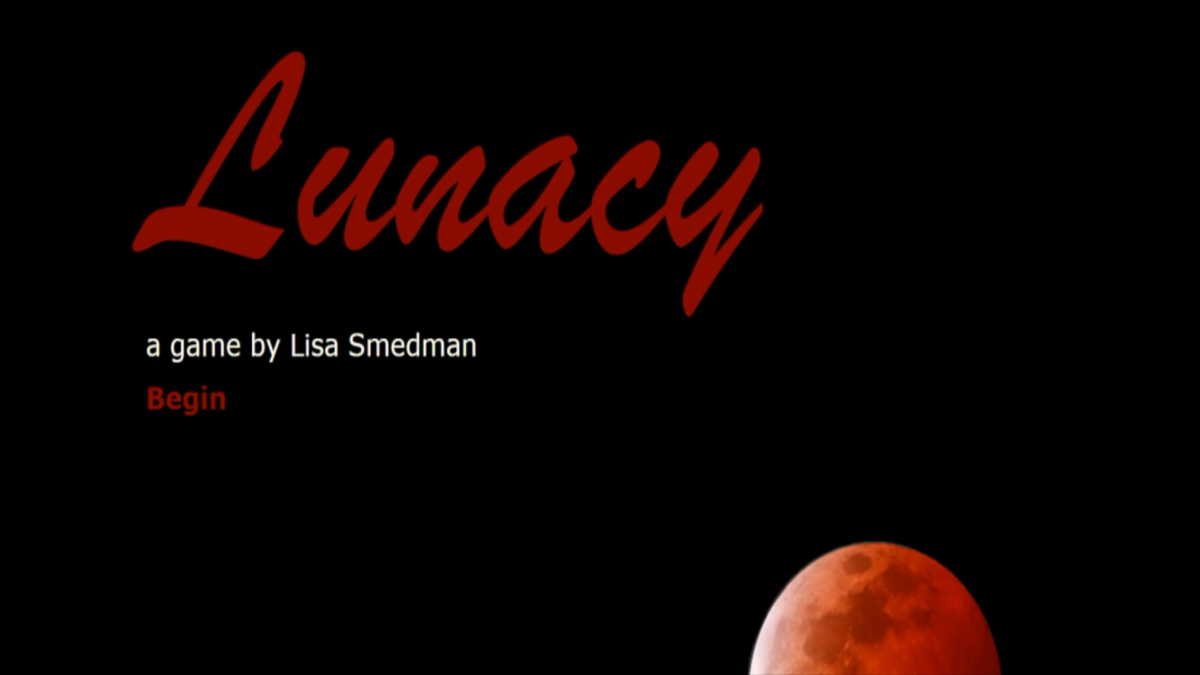Creator: Lisa Smedman
Exhibition: It’s a Date
Published: February 2022
Format: Video game
Content Advisories: Mentions violence and murder (no specifics, text only).
The Project
https://lisasmedman.itch.io/lunacy
(Play it now!)
Creator’s Statement
Lunacy began with an exploration of calendars – those created by humans (days, months, years) and those created by nature (phases of the moon, solstices and equinoxes, lunar eclipses). After a very long period of research (described below in my Process Notes) I decided to explore the link between the phases of the Moon and human cycles, both physical and psychological.
Inspired by stories of werewolves and Moon-inspired madness, I wanted to tell the story of a man affected by magic that can only be done (or undone) under the light of a full Moon. And what better Moon, when it comes to bloodlust and madness, than a “blood moon” – the reddish-tinged Moon that occurs during a total lunar eclipse.
Lunacy is the story of a man who, after experiencing magic that gives him immortality – but at a terrible price – seeks to undo that magic. Year after year, he travels around the globe, chasing total lunar eclipses and praying for cloudless night skies.
Lunacy is made using Twine 1.4.2, a game engine primarily used to create “choose your own adventure” style games. I see this as a prototype, as a much simpler version of the game I’d have liked to build.
Given more time (and a different starting point) I would have made a game that includes a more complex narrative, as well as a more complex game system – one that included specific city locations, NPCs, a procedurally generated weather system, and the need to carefully balance the cost of travel versus the probability of success. Something along the lines of the game 80 Days, a brilliant game which I absolutely adore.
Still, I’m happy with what I managed to create in such a short time. Sometimes the journey through the game is short, and ends in a quick cure – and sometimes it’s long, and ends in failure. I invite players to try their hand at eclipse chasing, and see where the journey takes them.
Artist Statement
Process:
Lunacy began with calendars. Our standard calendar has a seven-day week, a 28, 30, or 31-day month, and a 365-day year, but these don’t quite fit with the way our Solar System works – and so we have a “leap year” to make up the difference.
The word “month” has its origins in the word Moon. But when it comes to the cycles of the Moon, the fit with the calendar is also just a little bit off. The Moon goes through a “synodic month” – a cycle from full to new and back to full again, as observed from Earth – approximately every twenty-nine and one-half days. (To be precise, every 29.53059 days.)
This intrigued me: what would a calendar look like, if it were simply based on the cycles of the Moon?

I found lunar calendars online – beautiful calendars that showed how the Moon cycles through its phases, with a picture of the Moon on each day of the calendar month. I also learned that a full Moon only happens when the Moon is on the opposite side of the Earth from the Sun.
I found a wonderful illustration of why the Moon goes through cycles, published circa 1850, that visually illustrates the process.
I also learned about the origins of the phrase “Once in a blue moon,” an expression used to denote something infrequent. The saying originated in a Farmer’s Almanac, which gave the term to the third full Moon in an astrological season of four moons – in other words, when there were four full moons between equinox and solstice, or solstice and equinox. (More recently, the phrase has been applied to calendar months that contain two full Moons.)

That got me thinking about “special” Moons, and how they might be magical.
Which led me to lunar eclipses.

I started to research how lunar eclipses relate to the calendar, hoping to learn what cycles they followed. I learned that a total eclipse of the Moon (known as a “Blood Moon” because the Moon turns a dim red) can only happen when the Earth is between the Moon and Sun – when the Moon is full.
The Moon doesn’t remain a constant distance from the Earth. Its apogee (farthest distance) and perigee (closest approach) differ by about 50,000 kilometers. When the Moon is at perigee, it appears slightly larger when viewed from Earth – a phenomenon known as a “supermoon.”
Like the phases of the Moon, the cycle from apogee to perigee doesn’t fit neatly into a calendar. Going from apogee to perigee and back to apogee again takes twenty-seven and one-half days. (To be precise, 27.55455 days.)
This makes calculating the timing between lunar eclipses… complicated.
But there’s more.
The Sun, Earth and Moon don’t precisely line up. The Moon’s orbital plane is inclined to the Sun-Earth plane by five degrees. This means that not every eclipse is a total eclipse – which happens only when the Moon passes fully through Earth’s umbra (the darkest part of Earth’s shadow). Most eclipses are partial or penumbral.
Only every eighteen years and eleven and one-third days (or ten and one-third days when five leap years are included) do the Earth, Sun and Moon return to nearly the same relative positions, causing a cycle of lunar eclipses to begin anew – a period known as a “saros.” This pattern is quite beautiful, when plotted on a graph, as below.

All of this variation means that eclipses tend to “walk” their way round the Earth, falling in a different longitude from one eclipse to the next. Each subsequent eclipse appears approximately 120 degrees further west. After three saroses – after approximately 54 years and one month – the longitude is repeated.
This gave me a whole new appreciation for the ancient astronomers who worked most of this out centuries ago.
During any given year, there are a total of zero to three lunar eclipses. I decided to focus only on total eclipses, and started to plot these in a table I created. I started with the year 1834 and ended with the year 2010 – two years in which a total lunar eclipse fell on a Solstice (summer and winter solstices, respectively). This would be the start and end of the “magic” in my game.
In any given calendar year, there are zero to three total lunar eclipses. These eclipses tend to group together into eclipse “seasons.”
I started counting the days between them. There were patterns, numbers that appeared repeatedly: 177 (or 178); 354 (or 355); 856 (or 857); 4,164 (or 4,164); 5,729; 6,585… At first, I thought I could do something based on predicting the next total eclipse, but it got complicated. Fast.

It was madness. Lunacy.
Then I found a website which lays it all out visually. Date of lunar eclipse. Total, partial or penumbral. Longitude. Year by year by year, far into the past and well into the future. These became my “maps” for where the character in my game might travel.
I created my own calendars, placing onto them an image of a “blood moon” on dates that total lunar eclipses happened. “Super blood moons” were represented by a slightly larger image of the Moon – something I leave it to the layer to spot.

The gameplay of Lunacy (such as it is) arose from these calendars. The player is tasked with clicking “stop” as the years flash by, in the hope of landing on a year with a lunar eclipse. From there, the game system takes over, calculating the cost of travel to this location, and the percentage chance of a cure.
Creating this game was a long process, and much more work than it needed to be. If I were starting from a strictly gameplay perspective (as opposed to starting with a deep dive into calendars) I would have abstracted the numbers, come up with an approximation of the actual system, and focused more on gameplay. But I’m happy with the result, and am pleased to say I learned a lot in the process.
